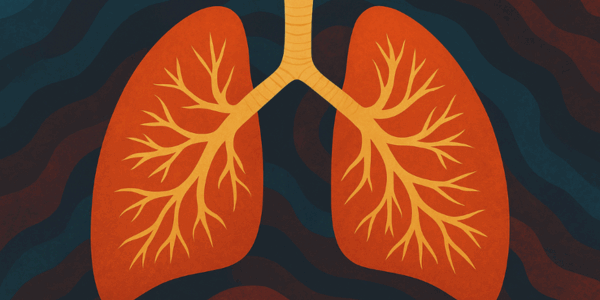Respiratory Medicine Spotlight
Introduction
This issue explores groundbreaking advances in respiratory medicine, from AI-driven drug discovery and redefined disease diagnostics to the hidden neurological risks of common viruses.
AI-Designed Drug Shows Promise in Treating Lung Fibrosis
A landmark clinical trial has demonstrated the success of a drug entirely discovered and designed by generative artificial intelligence. The drug, rentosceptib, targets a protein called TNIK. It was tested in patients with idiopathic pulmonary fibrosis (IPF), a progressive and fatal lung disease. In a 12-week, controlled study of 71 participants, the drug was well-tolerated. Most notably, patients receiving the highest dose saw a significant average improvement in lung capacity, while those on a placebo experienced a decline. This breakthrough proves the value of AI in identifying drug targets and designing effective molecules, paving the way for a new era in developing treatments for complex diseases.
New Diagnostic Model for COPD Uncovers Hidden Risk
A groundbreaking study suggests that diagnosing Chronic Obstructive Pulmonary Disease (COPD) with a simple breath test (spirometry) alone is insufficient and misses many at-risk patients. A new, multidimensional model that also includes respiratory symptoms, quality of life impacts, and CT scan findings (like emphysema) offers a more accurate picture. Using this new criteria, over 15% of people previously classified as “normal” were found to have COPD. These individuals were at a significantly higher risk of death, disease flare-ups, and faster lung function decline. On the other hand, some individuals with measured airflow obstruction but no related symptoms or CT scan abnormalities were declassified from having COPD. This refined approach allows for earlier intervention and more personalized patient care.
Novel PET Scan Enables Early Detection of Pulmonary Hypertension
Researchers have developed a new imaging technique that can catch pulmonary arterial hypertension (PAH) early, before major, irreversible damage occurs. The method uses a specialized PET scan that tracks the activity of fibroblasts, the cells responsible for harmful tissue scarring in lung arteries. In studies with both animals and human patients, this scan successfully detected early disease and was also able to monitor positive responses to treatment. This advancement could revolutionize PAH management by enabling earlier diagnosis and allowing doctors to tailor therapies effectively.
Study Highlights Neurological Dangers of RSV and Flu in Children
Respiratory Syncytial Virus (RSV) and influenza are not just respiratory threats to children; they can also cause serious neurological complications. Research indicates that a significant number of children hospitalized with these viruses can experience issues ranging from seizures and encephalitis to more severe outcomes like stroke. RSV, in particular, is also linked to central apnea, feeding difficulties, and potential long-term learning impairments. The findings highlight an urgent need for heightened awareness, better prevention through vaccination, and targeted strategies to protect the neurological health of vulnerable children.
Review Investigates CMV’s Role in Worsening Lung Disease and Mortality
Cytomegalovirus (CMV), a common virus that typically lies dormant in healthy people, is now under investigation for its potential role in chronic lung disease and overall mortality. A recent review explores how CMV may accelerate age-related decline of the immune system. CMV is also associated with a higher risk of death from various causes, including COPD. The virus may trigger COPD flare-ups and contribute to the disease’s progression. While more research is needed, CMV could potentially serve as a future biomarker for identifying high-risk patients or even as a novel target for treatment.
Copyright 2025 Bentham Science. All Rights Reserved.
Contact us via email for more information.


